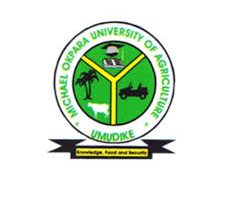History of Oyo College of Health Sciences and Technology
The College as School of Hygiene, Eleyele; lbadan was the Educational unit of the Directorate of Secondary Health Care and Training of the State Ministry of Health. The school was established as “The Sanitary Training Centre” on 1st of April, 1933. It was first located at the Onireke Health Office now Ibadan North West Local Government headquarters. Then, it provided 24 months training course to the Native Authority Sanitary Inspectors. Mr A. E. Warmonger (a Sanitary Superintendent) started the school and ran it for 5 years.

In 1940, the institution was re-named “The School of Hygiene”. Messrs B. A. Adelaja and Mr, J. A. Olusanya, two experienced Sanitarians joined the Tutorial Staff of the School. In July 1951, the first batch of 24 Government Sanitary Inspectors started their training from all over the Federation, which had their designation changed from Sanitary Inspectors to Public Health Inspectors. In 1957, Dr. Normal Taylor, World Health Organization Adviser on Education and Training was seconded to the Western Regional Government for the purpose of reviewing the methods of training of Auxiliary Health Personnel. And the school was re-named School of Hygiene and Health Auxiliaries Training School and Dr. Normal Taylor became its first Principal. Since then the Ministry of Health has been improving on the standard of training.
In July, 1958, Dr. A. Adeniyi Jones later a professor and now of blessed memory became the second Principal of the institution. He moved the school from Onireke Health Office, first to the University College Hospital old site near the Nurse Preliminary Training School (Now College of Nursing and Midwifery, Eleyele) and finally to its present site at Eleyele on 17th April 1962. In the same year (1958), Health Assistant course was introduced. In 1969, the training of Sanitary Overseers was abolished while the Public Health Inspector Training was reviewed and then the 3- year course led to the award of Royal Society of Health (West African) Diploma. During the tenure of Dr. Adeniyi – Jones, the training of Dispensary Health Assistants was taken over from the hospitals. Rural Health Assistants ran the same course as the Dispensary Health Assistants. Both Cadres were later recognised/designated as Rural Health Superintendents in some states. They worked in special units like Small Pox, Measles, Medical Field Units, Leprosy and other epidemiological health survey.
In 1963, a one – year course for Health Sisters equivalent to the Health Visitor’s Certificate in the United Kingdom (Diploma in Public Health Nursing in the United States) was started. It is the only course of its kind in the Federation. For 16 years the school was the only one offering Public Health Nursing Course for the rest of the States of the Federation and some English Speaking West African Countries like Liberia, Gambia and Sierra Leone etc. In 1974, Health Assistants Course was reviewed, and “Rural Health Nurse” changed to Community Health Nurses, which have been abolished.
The first serious attempt to put PHC service in place was in 1975, when the Head of State of Nigeria, General Yakubu Gowon announced the Basic Health Service Scheme as part of the Third National Development Plan (1975 – 80) The aim of the scheme was to “increase the proportion of the population receiving health care from 25 to 60 percent, the imbalances in the location and distribution of health, institutions and between preventive programmes such as control of communicable diseases, family health, environment health, nutrition and others, to establish a health system best adapted to the local condition and to the level of health technology”. The basic plan for the implementation of the scheme was to build in each local government area a Comprehensive Health Care centre that would serve as the health headquarters of the services. Four primary health centres, and 20 clinics. This was called a Basic Health Unit, designed for a population of 150,000. The health clinics were to be the most peripheral health facilities, each serving a population of 2,000. A Primary Health Care centre (the intermediate health facility) would serve as a referral centre for the four Health Clinics and serve a population of 20,000 while the Comprehensive Health Centre, the most sophisticated of them, would be the referral centre for the four Primary Health Centres and the four Health Clinics and serve a population of 50,000, with Mobile Clinics spreading out from the primary health centres.
To provide the health manpower required to execute these services, 9 Schools of Health Technology were established, one in each state to train three categories of Community Health Workers (the Supervisors, Assistants, and Aides); while Community Health Officers were to be trained in the teaching hospitals. The British Ministry of Health assisted the Federal Ministry of Health to draw up the list of equipment for the three types of health facilities (Health Clinics, Primary Health Care centre and Comprehensive Health Centre) which were supplied to those built in various States between 1979 and 1983.
Source: oyschst.edu.ng



